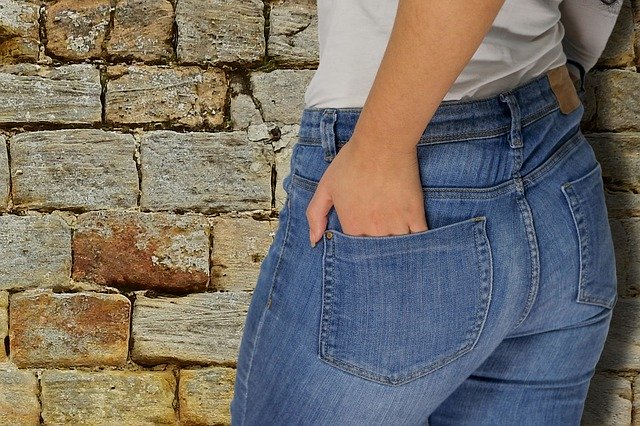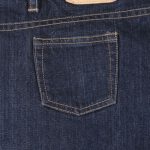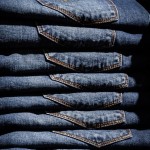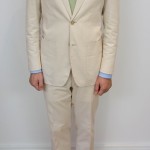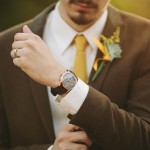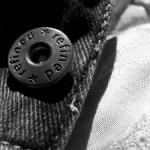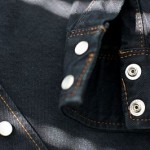Every wonder why jeans feature yellow-colored stitching? Although there are exceptions, most types of jeans — including men’s and women’s styles — are made with yellow stitching. Whether they are boot cut, straight leg, skinny, low rise, high rise, etc., they probably have subtle hints of yellow in the form of stitching. It’s a common characteristic of denim jeans that’s been around for nearly a century. So, why do manufacturers use yellow stitching in jeans rather than other colors?
Strength and Durability
Some of the world’s first jeans were designed with yellow stitching because of its superior level of strength and durability. During the late 1800s, Levi Strauss began exploring common materials with which to make jeans. While Strauss was adamant on using denim as the base material, he sought a stronger material for the stitching. At the same, Strauss had two main options from which to choose: silk and linen. Of those two materials, linen — which features a natural yellow tone — was the strongest and more durable, making it Strauss’s preferred choice for the stitching in his jeans.
With its strong and durable properties, yellow-colored linen was a better choice than silk for the stitching in jeans. Strauss discovered acknowledged this fact, which prompted him to use yellow-colored linen in his jeans.
Low Cost
In addition to being strong and durable, yellow-colored linen stitching is also inexpensive. Even if you’re unfamiliar with the construction of jeans, you’re probably well aware that silk, when compared to other materials, is expensive. Silk is made by cultivating silkworms in a controlled environment, typically with mulberry trees. As the silkworms eat the trees’ leaves, they produce silk, which is then processed and sold for use in garments and other textile-related applications.
Linen, on the other hand, is a more basic material that’s derived from the fibers of the flax plant. To make linen, textile companies simply grow large farms of flax plants. Once the flax plants reach maturity, they are harvested for their linen. As you can see, linen is easier to produce than silk, resulting in a lower price of production than silk. To lower the cost of their jeans, many manufacturers used yellow-colored linen stitching rather than silk stitching in a different color.
Matches Rivets
Another reason jeans have yellow stitching is because it matches the rivets. What are rivets exactly? Basically, rivets are the small metal buttons found in the seams of jeans. As shown below, they are usually found in areas where two parts of the denim fabric meet. The purpose of rivets is to make the jeans stronger and better protected against degradation.
During the early 1800s, jeans were produced and sold primarily for hardworking men and women. The California Gold Rush, for example, prompted thousands of people to purchase durable clothes, as well as other equipment, to search for gold. The use of rivets allowed these people to wear jeans without fear of the garment degrading or otherwise succumbing to damage.
The rivets used in jeans are typically made of copper, which as you may know, matches yellow. Stitching is available in many other colors, but yellow is a safe and effective color that works particularly well thanks to the copper rivets with which jeans are made. The yellow stitching features a similar color as the copper rivets, allowing for a cleaner and more cohesive appearance. This is one more reason why jeans are made with yellow stitching as opposed to other-colored stitching.
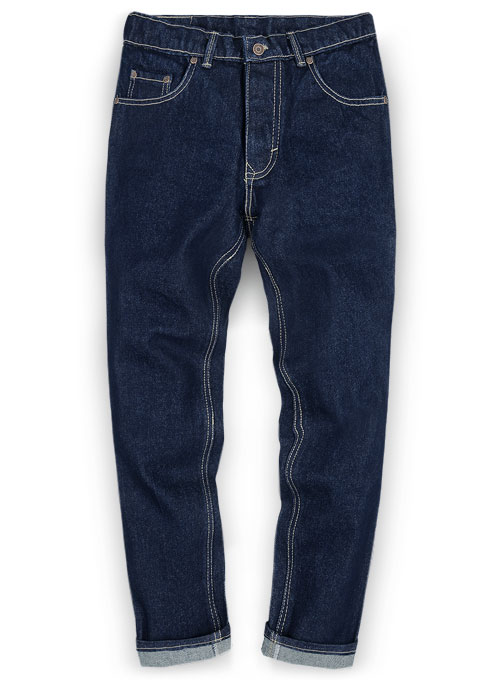
Cotton vs Linen Stitching
It’s important to note that while jeans were originally designed with linen stitching, many manufacturers have since switched to cotton stitching. When Strauss pioneered some of the world’s first jeans, he used yellow-colored linen stitching. In the following decades, however, most manufacturers have transitioned to yellow-colored cotton stitching for their jeans.
Cotton shares many of the same characteristics as linen. They are both lightweight, breathable and soft. Because cotton is so common, however, it typically costs less than linen. By using cotton stitching in the production of their jeans, manufacturers can save money. Furthermore, cotton can be dyed just about any color, including yellow. So, while you’ll still find yellow-colored linen stitching in some jeans, most jeans today now use yellow-colored cotton stitching.
High Aesthetic Value
Yellow-colored stitching offers high aesthetic value. As previously mentioned, it flows cohesively with jeans’ rivets. Being that rivets are copper, yellow stitching creates a cohesive appearance that ultimately results in better-looking jeans.
From traditional light blue and indigo jeans to modern red or yellow jeans, yellow stitching offers a high aesthetic value. The subtle hints of yellow complement the color of the denim to create an eye-popping appearance.
You can wear traditional jeans with yellow stitching in countless ways. For a casual look, simply pair them with a t-shirt and casual footwear, such as tennis shoes or athletic shoes. For a more formal look, you can wear a button-up dress shirt with boots and a sports coat or blazer. WIth yellow stitching, your jeans will complement the appearance of your other clothes, as well as fashion accessories, to offer a high level of aesthetics.
Conceals Stains
You might be surprised to learn that yellow stitching conceals stains more effectively than stitching in other colors. Granted, there’s no such thing as a stainproof textile, but yellow-colored textiles are generally better protected against stains. If you happen to spill a drink on your jeans, the yellow stitching will naturally conceal the liquid so that it doesn’t stand out as a visible stain.
In Conclusion
Although there are exceptions, most jeans are made with yellow stitching. In the past, linen was used for the stitching in jeans. Today, cotton-based denim is the preferred material among most manufacturers. Regardless, the stitching found in most men’s and women’s jeans is yellow. It’s strong and durable, cost less than other materials, matches the rivets, offers a high aesthetic value and contains stains.

